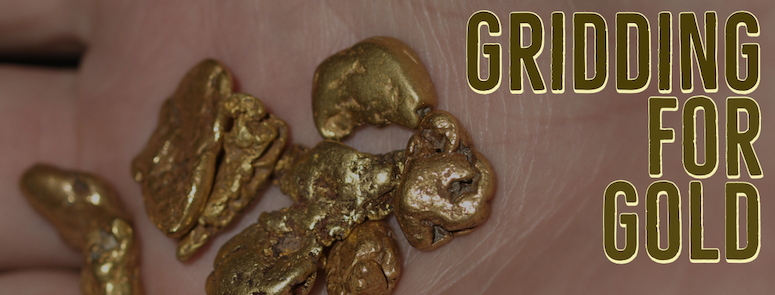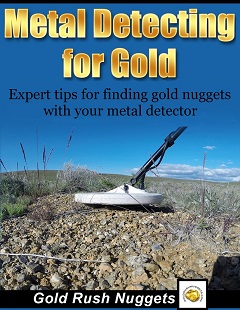
One of the most underutilized methods of metal detecting for gold is what we call “gridding.” The process is simple, but lots of prospectors don’t do it. And many who do end up doing it poorly, resulting in missed gold.
This is certainly not a secret method, but most people just don’t do it properly. Let’s take a closer look at this simple yet effective way to find gold with your metal detector.
What is Gridding?
The process is simple. Gridding describes the method of crisscrossing an area from several directions. The attention that you give an area will depend on how much gold you are finding.
Gridding allows you to thoroughly work an area and ensure that you are covering every square inch of ground.
When to Grid
Let’s consider a normal detecting scenario. We have spend the afternoon swinging our detector with no luck. Just a pocket full of iron rubbish and a few bits of lead.
Then we get lucky… the detector makes that nice zip-zip sound under the coil, and you dig up a small nugget. Success!
You proceed to hunt and about 20 feet away you get another target… Again, you dig up a nice nugget. It looks like you might have hit a new patch! This is when things get exciting.
One nugget is nice, but finding two or three in the same area is very nice. It shows a pattern, and the likelihood of finding more has gone way up. Time to slow waaaay down and start gridding.
How to Do it Properly
The whole purpose of gridding an area is to cover an area efficiently. If we are on ground that is giving up gold nuggets, then we want to make sure that we get our coil over every piece of ground.
In a manicured grass field this would be pretty simple, but most nugget country isn’t flat and smooth. You are going to be navigating around rocks, grass and shrubs. It can be very easy to miss a piece of ground.
This is where most people go wrong when the area gridding. They might hunt in a general “grid” pattern, but they are sloppy. If you don’t do it carefully and methodically you will miss ground.
Don’t try to grid an area the size of a football field. There’s no way to cover the ground effectively. You need to focus on a small piece of ground and make sure you cover it thoroughly. Only when you are confident that you’ve covered every piece of ground should you move on the the next plot. Cut an area into sections and work it carefully and methodically.
This is the most important gear to use when gridding. If you don’t have something to mark the start and end points of your grid, it isn’t going to work. You may think that you are covering an area effectively, but I can assure you that you are not.
I carry a small set of traffic cones in my backpack when I am prospecting in desert areas. They are small and lightweight. They work perfect in areas where the shrubs are short or nonexistent.
If I am detecting areas with big sagebrush or trees, then flagging works better. I can tie off a small bit of fluorescent tape on the tips of brush where it is easy to see. In brushy areas I usually make my grid even small because I know it will be harder to cover the ground.
If you are gridding and area that means that you have already found a nugget or two, so it’s more important than ever to slow down. You already know there is gold in the area. Swing your coil slowly, work it underneath the brush and around every rock and clump of brush. Nuggets know how to hide!
In my opinion, you can never thoroughly hunt out an area until you have used a variety of different detectors and coils. If you really want to hunt an area thoroughly then you should use both a sensitive VLF detector and a good Minelab PI detector. Try small coils and large coils. Make sure you are finding the small shallow nuggets along with the big deep ones!
Gridding an area takes time and it’s probably not worth doing in an unproven area. You should grid area of known, proven ground.
As it always does sooner or later, the gold will give out. It’s time to move on. Your success will depend on what to do next. Is it time to venture on to a new area? If your gridding produced a few more nuggets then you should just move your grid over to an adjacent plot of ground.
Take note of where you dig your nuggets. You might notice a pattern that indicates where more gold nuggets might be found. Expand your grid area and see if the nugget patch extends past your initial hunting area.
Next: Best Metal Detectors for Small, Crystalline Gold

